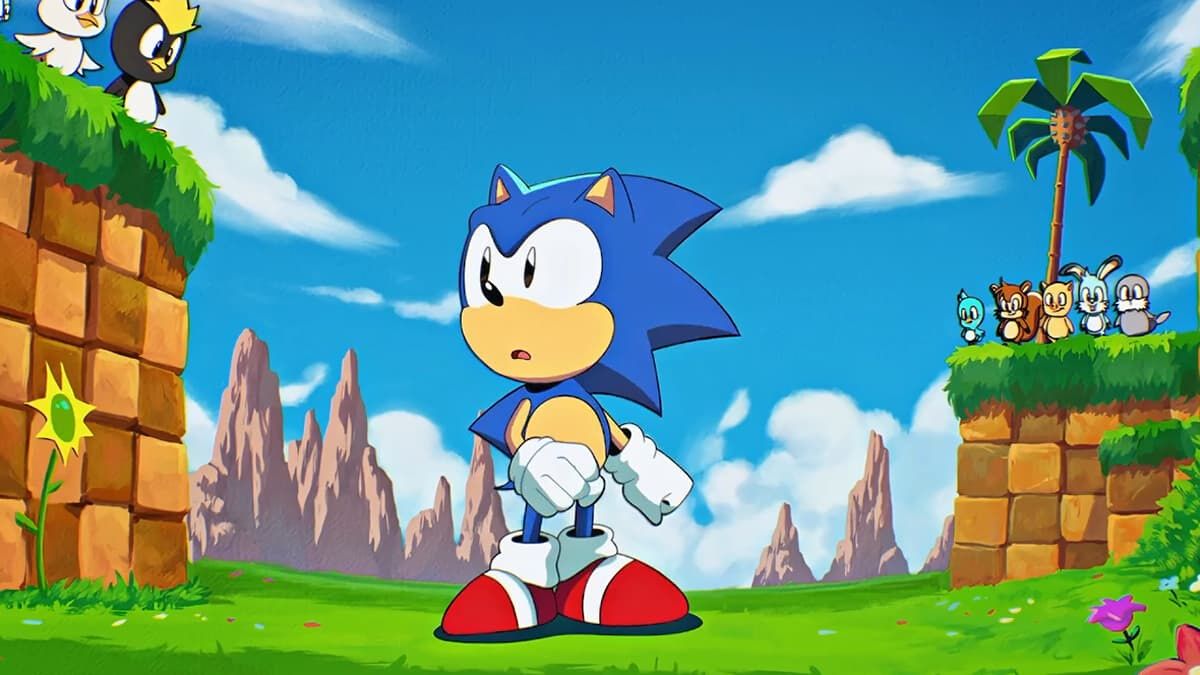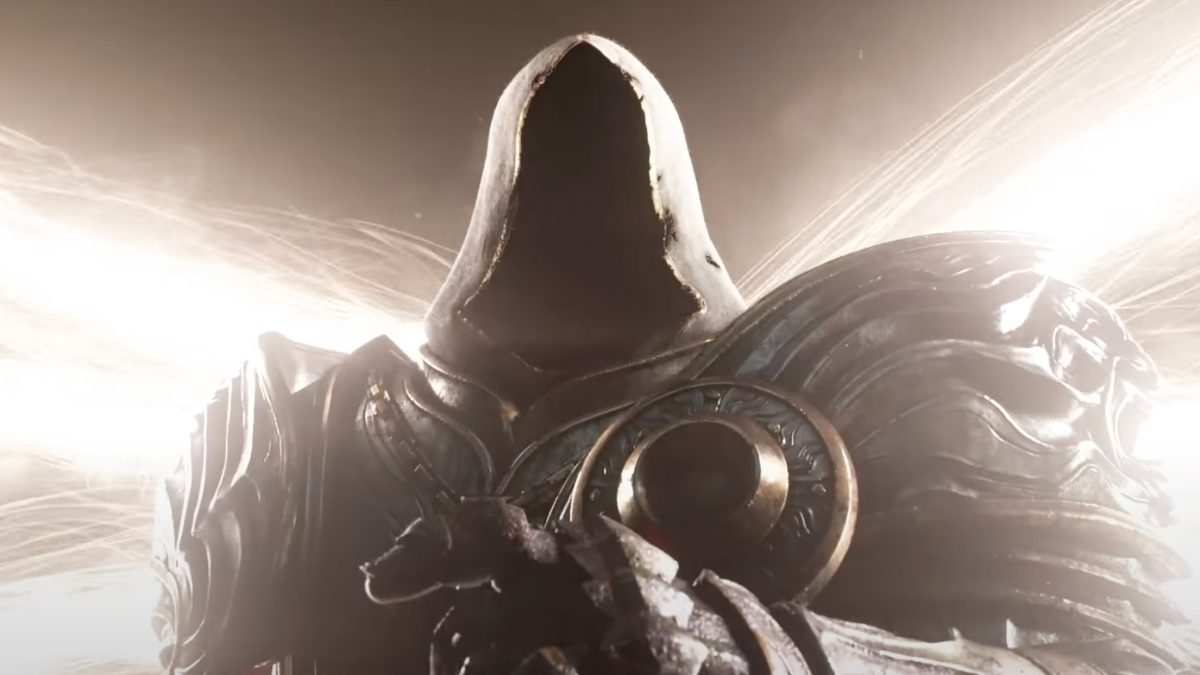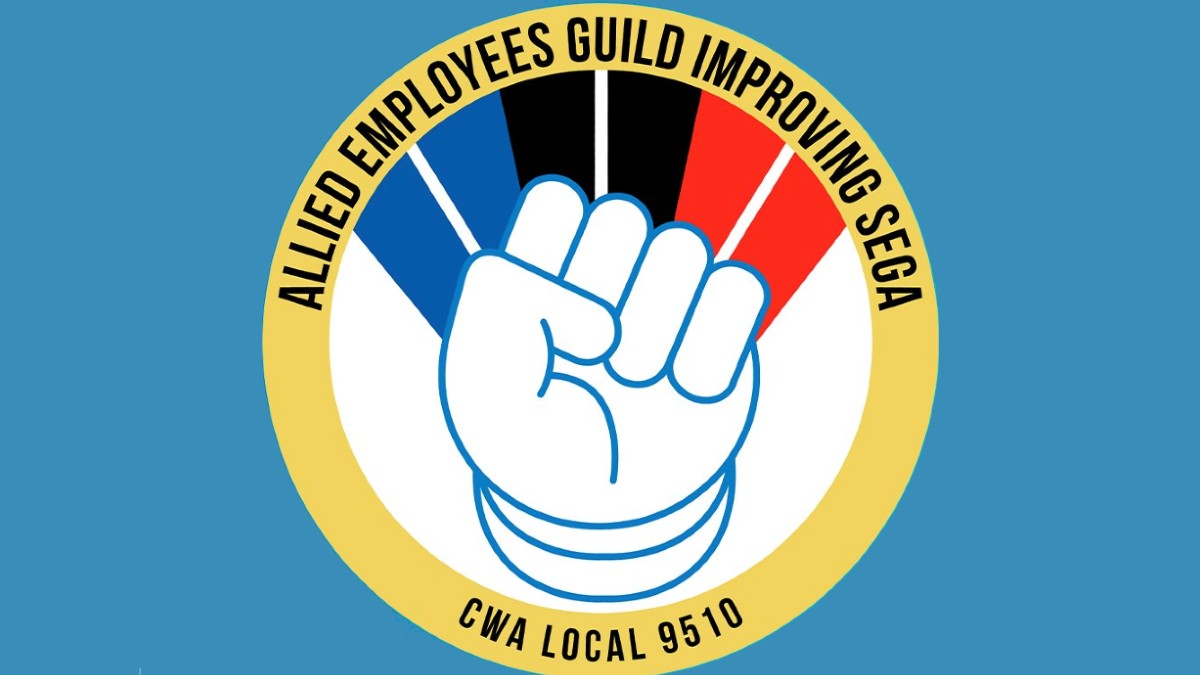On Tuesday, April 25, employees at SEGA of America became the latest to attempt to organize a union. The California-based team filed for a union election with the National Labor Relations Board (NLRB), an independent government agency that oversees all unionization efforts within the United States. The new union, Allied Employees Guild Improving Sega (AEGIS), has partnered with the Communication Workers of America (CWA) to bargain for higher base pay, improved benefits for all (healthcare, remote work, retirement), clear opportunities for advancement within the company, adequate staffing to end departmental overwork, and balanced workloads and schedules.
The supermajority of 144 employees are spread throughout the company — marketing, localization, live service, and QA to name a few. Ash Parrish at The Verge talked with some pro-union employees, who claim that the mutual love of video games, especially those being made within SEGA, was enough to unite the various departments. Conversations about unionization encouraged interdepartmental friendships, which reportedly made the process easier. Although AEGIS will be voting for the recognition of the union, they hope that SEGA of America and SEGA of Japan will both voluntarily accept them.
The IP holder of such massive popular series as Persona, Yakuza/Like a Dragon, and (of course) Sonic the Hedgehog, SEGA of America’s unionization effort raises an interesting question, as they are the first company with strong Japanese ties to attempt such an upheaval. It’s uncertain what the Japanese branch of the company will do with AEGIS, or even what this unionization of a sister studio may spell for the workers within SEGA of Japan itself. The reaction of SEGA of Japan — whether they recognize the union, and what that might rouse its own workers to attempt — could hint at the possibility of changing the video game industry within Japan itself. SEGA, both America and Japan, has yet to comment on the formation of AEGIS.

Unionization has been on the mind of many video game companies over the past year. Starting small, indie studio Vodeo Games made history by becoming the first full studio to unionize in 2021, although the bargaining process stalled when it became apparent the studio would not receive the funding necessary to stay open. Vodeo Games closed in September due to this inability to secure financial backing for their next game; their singular game, Beast Breaker, is available on PC and Nintendo Switch. A VR-focused studio, Tender Claws, formed the Tender Claws Human Union in July, becoming the first multi-department video game studio union in the U.S.
Many of the other unionization efforts have not been within the developers themselves; rather, it’s their Quality Assurance (QA) departments that are vying for equality and recognition. Activision Blizzard — the game giant behind Call of Duty which is in the midst of a major acquisition by Microsoft — has the most QA teams attempting to unionize. Part of this is due to the 2021 lawsuit from California’s Department of Fair Employment and Housing, which alleged Activision Blizzard was a hotbed for sexism and racism in the workplace. There were some other lawsuits, including one from Activision Blizzard against California’s DFEH. QA studios under the Activision Blizzard umbrella in particular feel harmed by a toxic work environment that leads to high levels of churn and massive burnout.
Although Activision Blizzard has attempted to stop or stall unionization efforts, three unions full of QA workers have formed, with two being officially recognized by the NLRB. The first, Raven Software, began conversations about unionization after walking out in December 2021 while protesting unfair layoffs. The Call of Duty: Warzone testers were met with major resistance after announcing their intentions, with Activision Blizzard going so far as to restructure the company and rule the nascent union ineligible to vote. After a judge ruled in the QA testers’ favor, the Game Workers Alliance won their union vote in May 2022 and is now represented by the CWA. The second, Blizzard Albany (formerly known as remaster powerhouse Vicarious Visions), is currently hard at work on the upcoming Diablo IV. In December 2022, they voted 14-0 to unionize after alleged union-busting efforts from Activision Blizzard higher-ups, who they will begin discussing a contract with soon.

Interestingly, the company acquiring Activision Blizzard, Microsoft, has taken a much more hands-off approach to unionization, entering a neutrality agreement with the CWA to not interfere with any possible efforts. It’s clear this is an effort for Microsoft to be seen as the good guy and help their acquisition go through smoothly. Nonetheless, it benefits the workers. Employees at various studios within ZeniMax Media — who are working on things like Starfield, The Elder Scrolls Online, and whatever id Software is tinkering on — avoided an NLRB election due to Microsoft’s neutrality. Instead, the 300 group members, collated under the banner of ZeniMax Workers United, gained immediate recognition. As of today, April 25, they have begun bargaining for a fair contract with ZeniMax and Microsoft.
The unions touched on here are only those found within the United States video game industry; two studios — Hardspace: Shipbreaker support studio Anemone Hug Interactive and Dragon Age: Dreadwolf QA studio Keywords Studios’ Edmonton — have begun the same unionization process within their home country of Canada. The tabletop game industry is also seeing unionization. Although I cannot begin to fathom yet another set of laws, this time set by the lands of maple syrup, Ryan Gosling, and D20s, it is encouraging to see the trend of unionization spread into a worldwide phenomenon.
Unionization has long been seen as a dirty word, particularly in the games industry. However, in an industry infamous for burnout, low pay, and exploitation of workers — a new trend is forcing employees back into the office after years of the option for remote work — it’s becoming more and more commonplace to protect workers’ rights. The simple fact is: without the employees within QA, art, programming, narrative, or even marketing, video games would not be made. There would be no multi-hundred-million dollar industry without the blood, sweat, and tears of those who dedicate their lives toward building it one pixel at a time.

